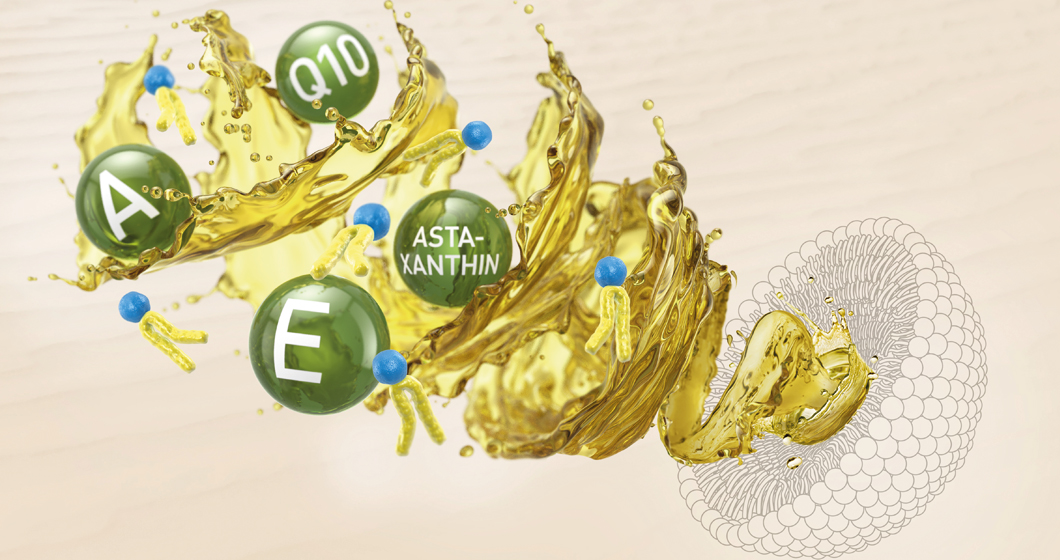Phospholipids – The Most Natural Way to Premium Skin Care
Phospholipids number among the body’s own building blocks and are an essential part of cell membranes. Therefore, they are highly biocompatible, completely biodegradable, and irritation-free, making them exceptionally suitable for sophisticated, high-end skin care products. Many of our phospholipids are based on non-GMO soy or on sunflower, making them suitable for COSMOS and NATRUE-approved formulations. In general, because of their naturalness and excellent tolerability, phospholipids are widely used in products for sensitive or irritated skin, baby care, and dermo-cosmetics.
For more information, please refer to our Product Finder or our blog articles.

Benefits: Phospholipids Are Perfectly Natural High Performers
Phospholipids are versatile raw materials that will add technical as well as physiological benefits to your formulations. They are strong emulsifiers as well as skin texture modifiers, they will enhance the performance of actives as well as protect the skin. Phospholipids can be used in a broad variety of product lines, such as leave-on, rinse-off, sun care, or color cosmetics products.

Schematic diagram of phospholipids, a lamellar structure, an emulsion droplet and a liposome.
Applications: Phospholipids Are Multifunctional Raw Materials for Cosmetic Formulations
Based on their amphiphilic character and their ability to interact with human skin, phospholipids can serve as actives for skin protection and skin rejuvenation, delivery systems for cosmetic active ingredients, and as emulsifier systems with perfect skin feel. They can form colloidal systems like liposomes or micelles, or even form lamellar structures mimicking the skin’s natural lipid layer.
Our products are easy to handle and to formulate with standard laboratory or production equipment, they are freely combinable with other cosmetic raw materials such as oils, thickeners, emollients, preservatives, actives, etc.
Related blog articles:
The Smart Carrier System for Lipophilic Cosmetic Actives
Modern consumers demand more from skincare: powerful results from natural, skin-friendly ingredients. Lipophilic cosmetic actives—such as coenzyme Q10, vitamins A and E, and astaxanthin—are known for their efficacy, but their full potential can only be [...]
PhytoSolve® – Amplifying the Potency of Encapsulated Lipophilic Actives
The performance of lipophilic cosmetic actives can be significantly enhanced by a suitable carrier system. Such carrier systems deliver the co-formulated active in deeper skin layers, should provide easy processing and increase the solubility in [...]
Boosting Astaxanthin Benefits with Phospholipids – A Coverstory
Encapsulation of cosmetic active ingredients in skin-friendly particles potentiates their skin interaction and results in a superior and long-lasting cosmetic effect. PhytoSolve® Astaxanthin is an innovative natural product comprising a synergistic complex of the antioxidant [...]
- Phospholipids
- Actives
- Functionals
- Delivery Systems


